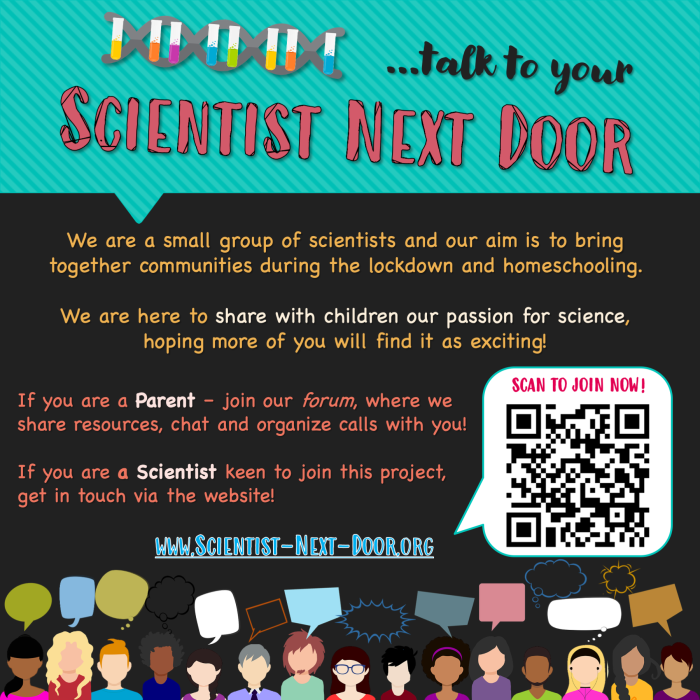As a small community of scientist from the Universities of Edinburgh and Durham, we started www.scientist-next-door.org project.
Our aim is to share our passion for science with children that are now bound to be homeschooled through the COVID-19 lockdown.
We believe this time can become a life-changing opportunity and help bring up a new generation of fantastic scientists!
During the lockdown, we will hold group video calls with families and discuss topics of interest, share ideas and resources.
We have called this project Scientist Next Door as we think after the lockdown is over, it would be great to meet in person your neighbouring scientists!
You can learn more about scientists participating to this project here. And if you are a scientist and would like to join us, contact Valentina.
And for now, stay home, stay safe, look after yourselves and loved ones and join the forum and the upcoming video calls.








 Today I was invited to present my work at
Today I was invited to present my work at 